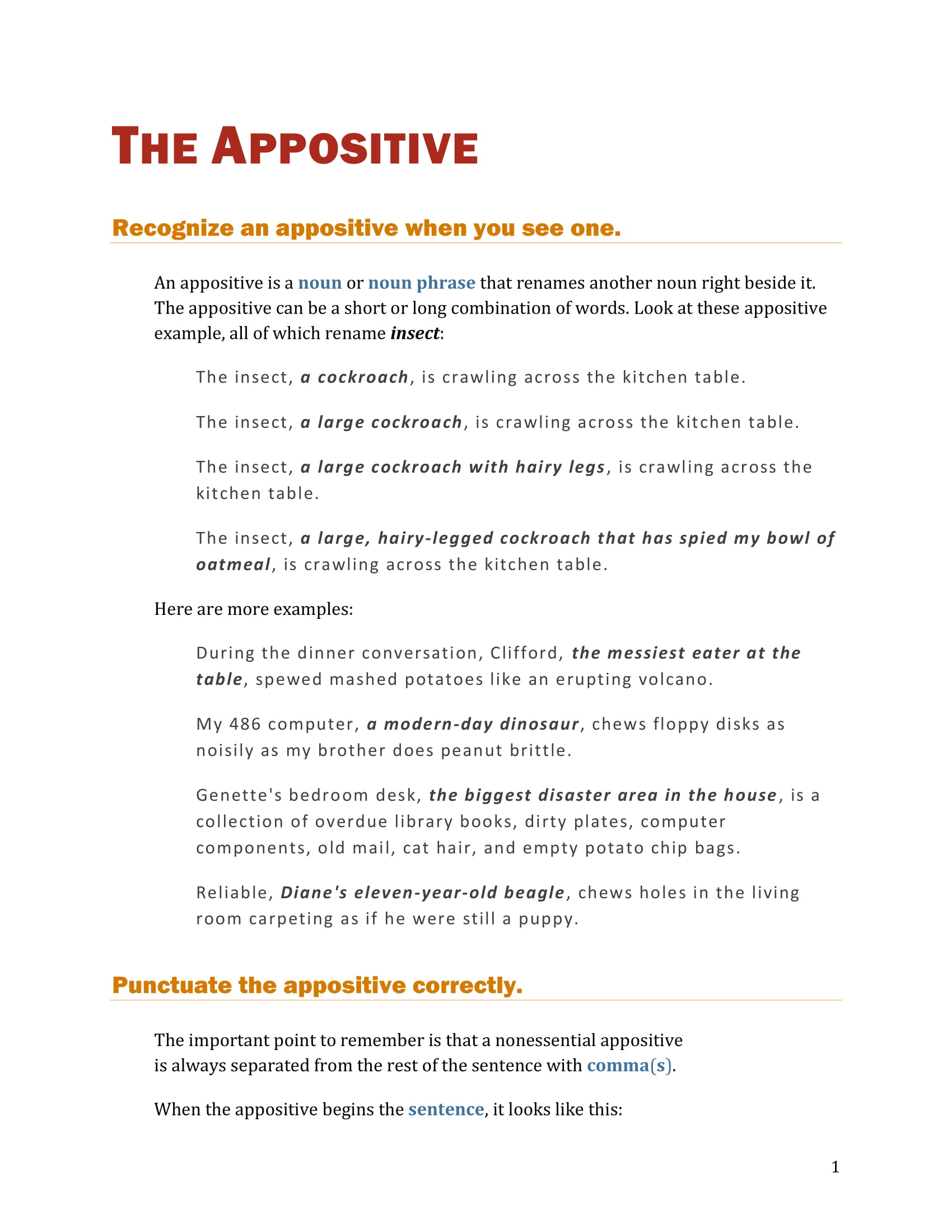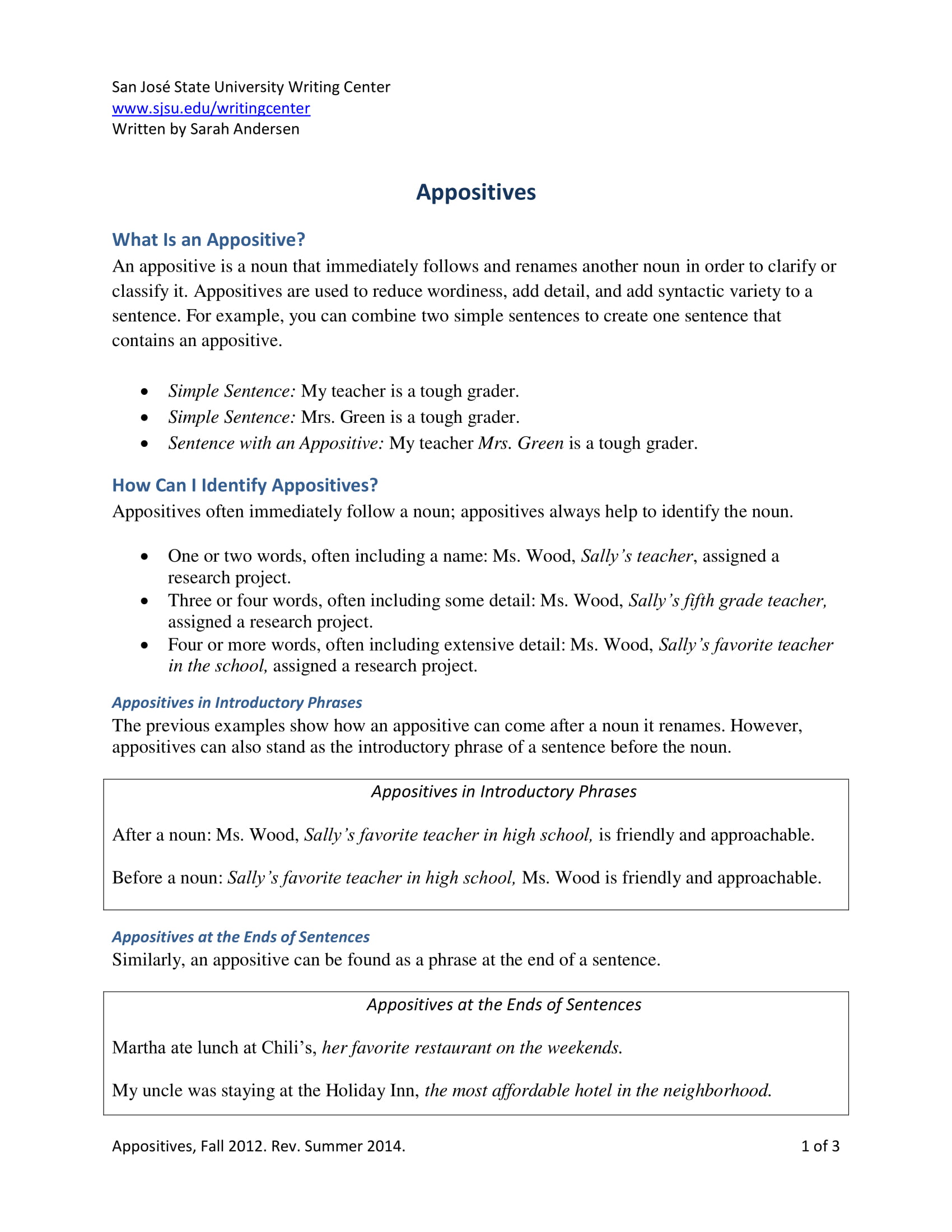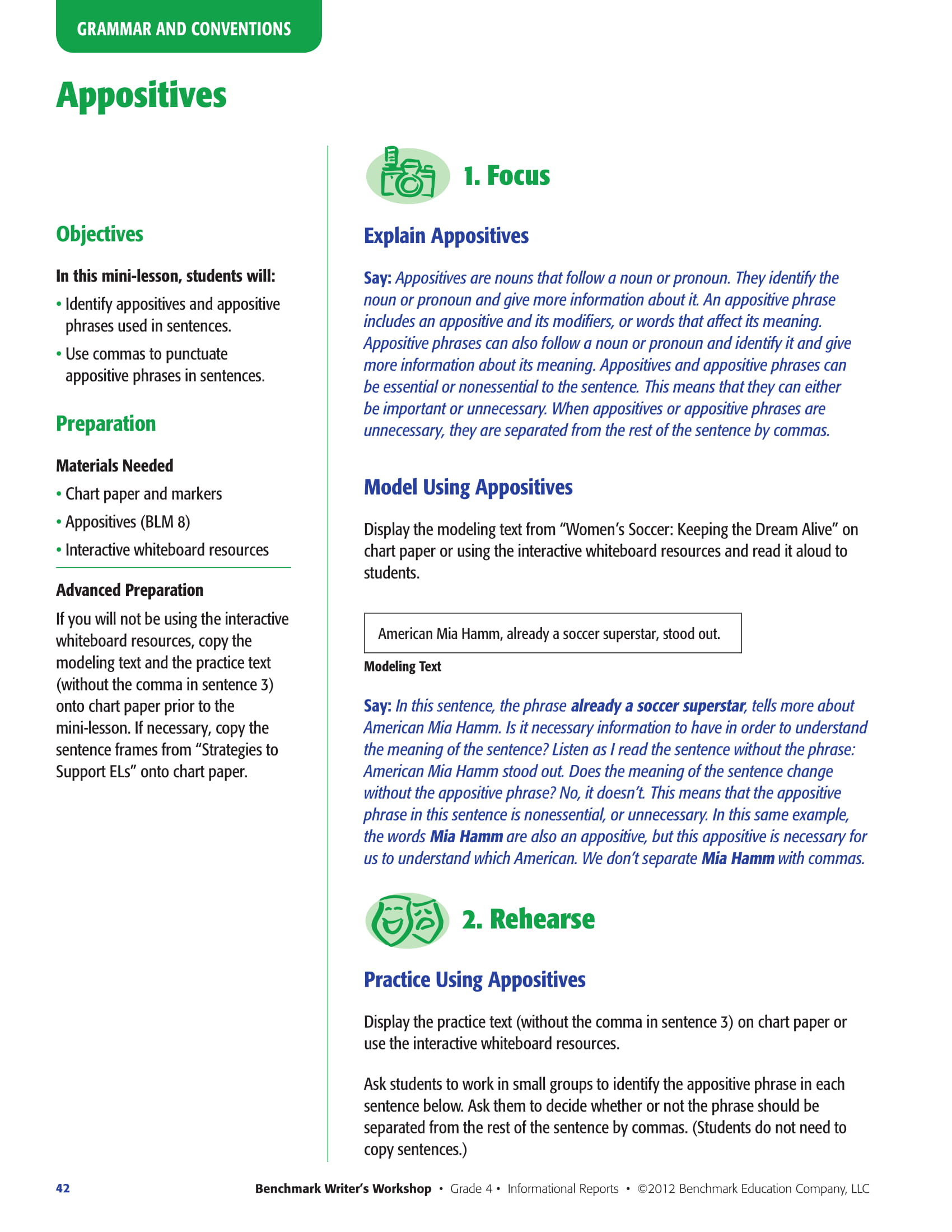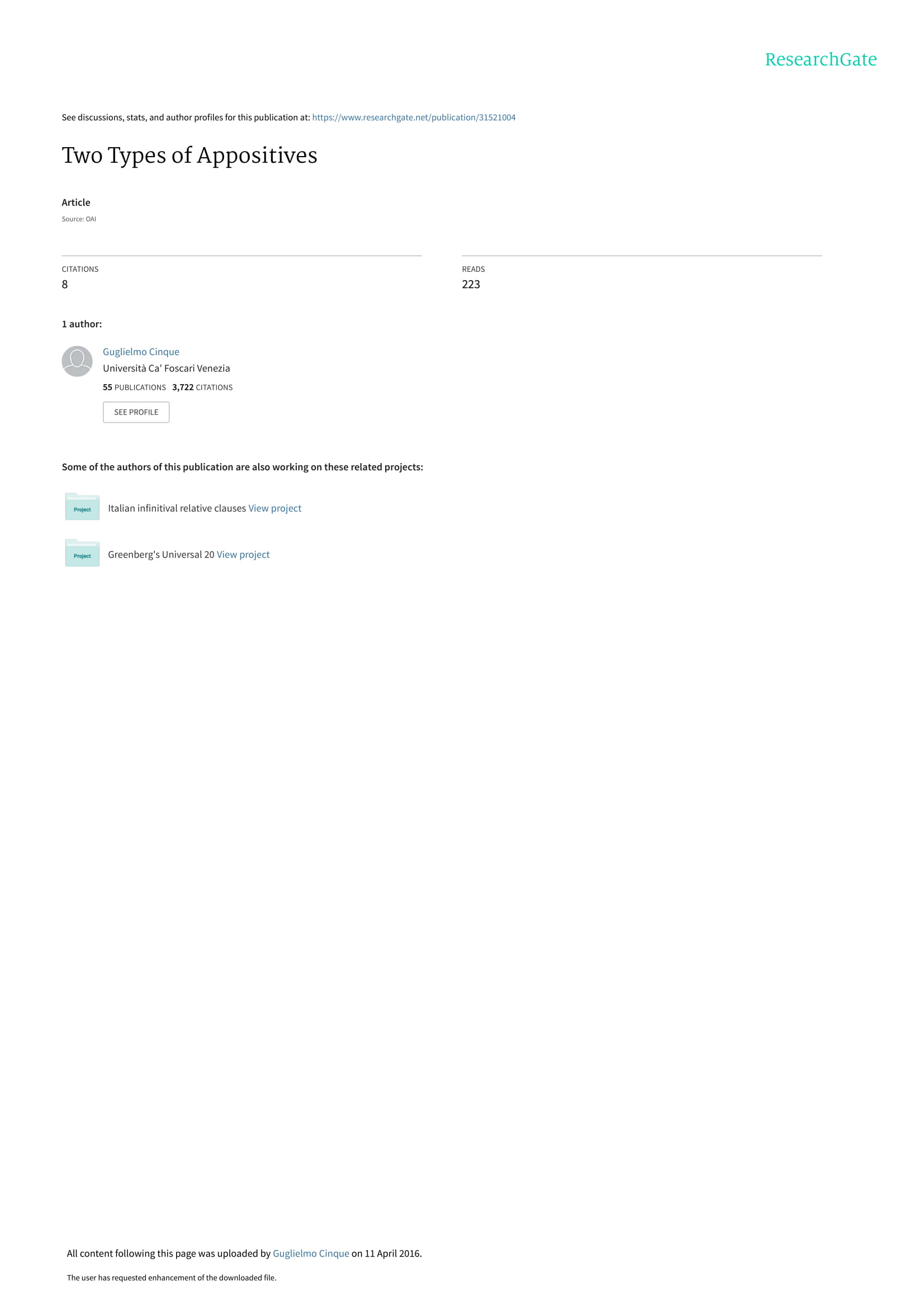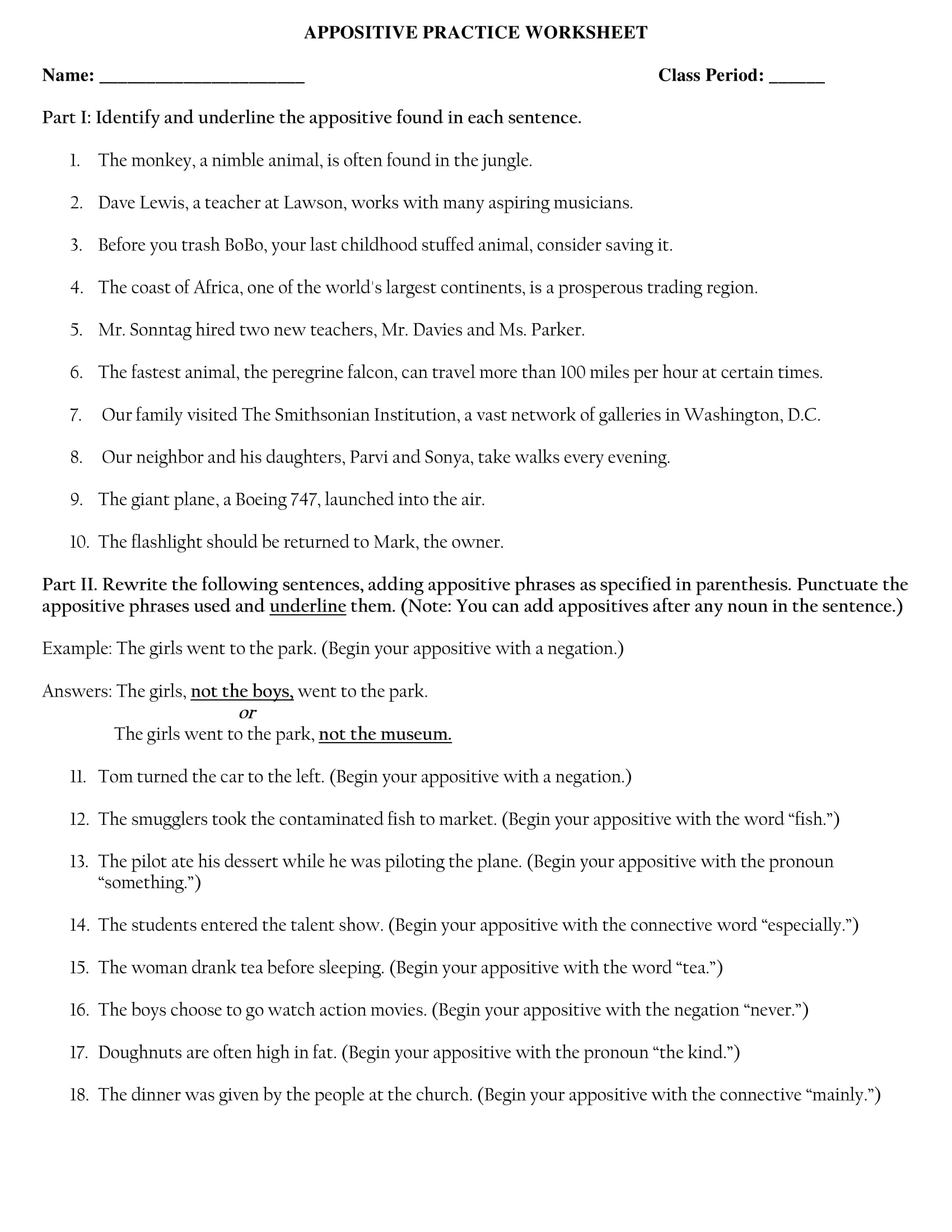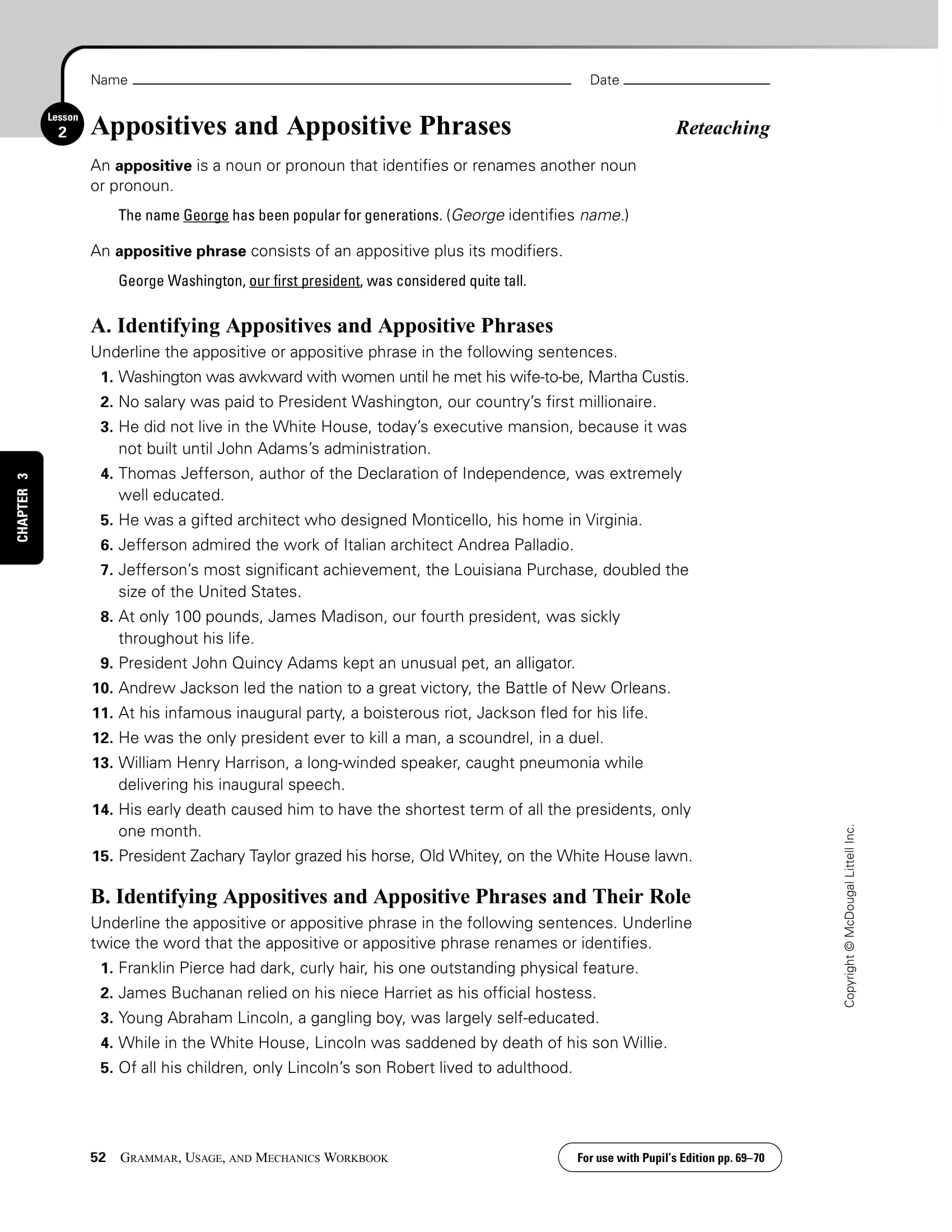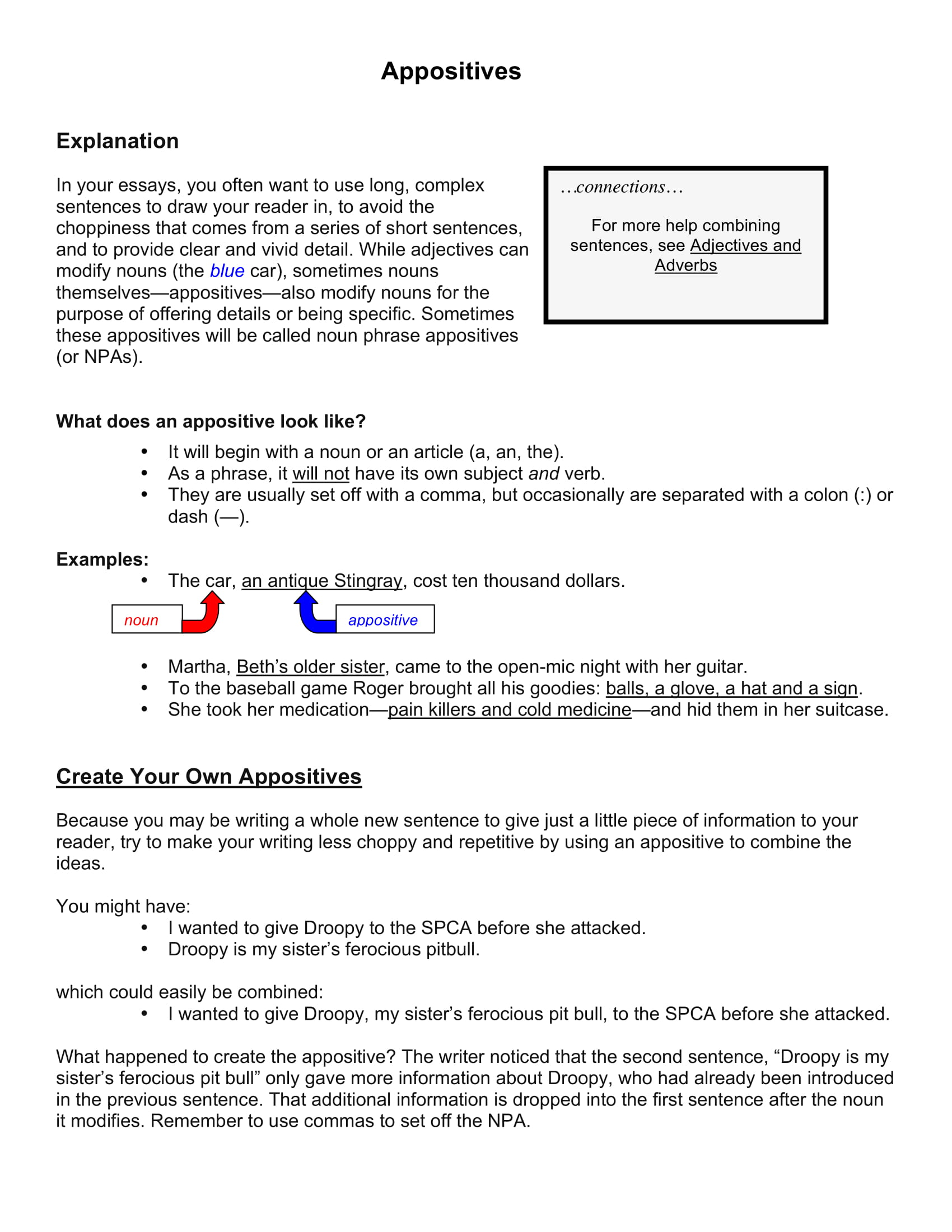7+ Appositive Sentence Examples
There is in the English language, a way of adding details to a noun without starting a new sentence. For example in the sentence,
Albert wants to play.
But you want to include details in the noun, Albert, with something else. The usual way to do that is to add another simple sentence. So,
Albert wants to play. He is my classmate.
The Appositive Example
Appositives Example
Now, what if you were told that there is a common noun in the two sentences, Albert and classmate. They are one and the same. And what if you were told, you can merge this two sentences into one sentence. You may also see balanced sentences usage and examples.
Albert, my classmate, wants to play.
Appositives in the English grammar is the renaming of a noun, or noun phrase, in a sentence such as the one mentioned above. It is a literary device, that comes after (or sometimes before) a noun.
In a series of nouns, in this case, there is the main subject, or the noun; and the other one, the precedent is the appositive. In the sentence, Albert, my classmate, wants to play, the noun is Albert, and the appositive is my classmate. You may also like how to write short sentences.
Appositives are not just for decorative purposes. Although it may function as such. But they are mainly and originally used to make sentences clearer to the audience. Also, they can make your sentences economical. Instead of writing two or more sentences, you can do it in one, just like you do in a relative clauses. But more into relative clauses later in the article.
The definition of appositives as a renaming of a noun seems a misnomer, or simplistic. It somehow, connotes that an appositive is not for practical purposes. But an appositive is more than that, as we shall see in the following examples;
- The bag owned by Jenny was stolen.
- They, John and Jay, went to the city.
- Albert, my classmate, wants to play.
Now, consider if you take away the appositives in the above given examples.
- The bag was stolen.
- They went to the city.
- Albert want to play.
Without the appositives, our knowledge of the bag, the pronoun we, and Albert would be limited. Whose bag was stolen? Who went to the city? Whose Albert are we referring to? Meaning, the appositives are not just for decorative and artistic purposes. They are there as literary device. You may also check out complete and incomplete sentences examples.
Appositives Grammar and Conventions Example
Two Types of Appositives Example
Since appositives are literary device, they are governed by some rules. Let us first look at some, (they are not many though):
The unnecessary use of appositives.
It is good to use appositives as mentioned earlier, especially if they are not just for artistic reason. But using appositives in every sentence, in all sentences, that may create a monotonous tone. You might be interested in imperative sentence examples.
The rule in writing is to vary your sentence construction one after another. But if you have appositives in all your sentences, and you do it obsessively, that is not healthy. It will only make your writing boring. And should you want to use appositives, vary its placement. You may also see examples on how to write a sentence outline.
Appositives do not only occur in the first section of the sentence. You can see in the following examples, these appositives are appended only to the subject of the sentence.
- The bag owned by Jenny was stolen.
- They, John and Jay, went to the city.
- Albert, my classmate, wants to play.
If you notice, some of the examples have commas, some do not. Why is that? It is because, there are types of appositives. And when we talk of the two types of appositives, we can not escape as to how commas should be used. Commas are very important in appositives, and not just in appositives, but in all literary devices as well. You may also like exclamatory sentence examples.
we may demonstrate the importance of a comma in the following sentence:
- Let us eat father. vs Let us eat, father.
Obviously the correct one is the latter. The thought is simple, but it goes to show how a missing comma can change a thought. We mention missing commas here because later on, we will also discuss about commas being abused. You may also check out examples of oxymoron in sentences.
Proper use of commas, dash
Grammarians made some rules on the use of commas when using appositives. So far the examples that we have shown made use of appositives that require commas. But there are actually two kinds of appositives: Restrictive and Non-restrictive. You might be interested in compound sentence usage and examples.
1. Restrictive Appositives.
When an appositive is necessary and gives more specific information of the noun or pronoun. Since the appositive is very essential to the noun, it is not separated by commas. Such as in the example:
- The mayor Tom Obama called us yesterday on the phone.
- The expensive mobile phone maker Verto is better than Epple.
- Your fiancee Jenny loves to eat cakes.
You can see, there is no need for the commas in the sentences. It is because there is no need to cut off the tone of the noun because the appositive in the sentence is very essential in the whole sentence. You may also see complex sentences definition and examples.
2. Non-Restrictive Appositives.
When an appositive is not really necessary and the noun can provide some details in the sentence. These appositives may be omitted. Such appositive may require commas.
- Tom Obama, the mayor of XYZ, called us yesterday.
- Vertu, an expensive mobile company, is bigger than Epple.
- Jenny, your fiancee, loves to eat cakes.
Appositive Practice Worksheet Example
Appositives Revised Example
Studying the two kinds of appositives, the restrictive and non restrictive, one can learn when to use and not to use commas. You may be tempted to use commas in every appositives, but that is not always the case. Again, if the appositive is very specific, then there may not be a need to use commas. You may also see fused sentence examples and corrections.
- Another alternative is the use of dash or colon. This can be used effectively if the appositive is at the end of the sentence. Such as in the following:
- For the killer, there was only way to solve the problem – escape.
1. Multiple Appositives.
It is possible that a sentence can have a series of appositives after renaming a noun.
- Michael Jordan, the celebrated NBA player, the most handsome actor, was found dating with Sharon.
- We went to XZY – the biggest mall in town, and yet the ugliest.
However, beware when using appositives as it may confuse the readers. You may also like cumulative sentence examples.
2. Negative Appositives.
There are cases when you use an appositive, but instead of renaming it with the same quality, you give a negative replacement of the word. For example;
- Jenny, not the pretty Jenny, (but the Jenny we talked of a lot,) is absent.
Instead of saying,
- Jenny, the one we talked about a lot, is absent.
3. List Appositives.
Multiple appositives can appear as list appositives. We can just safely say if the list is more than two appositives, then that can be called list appositives. An example would be;
- She left her tools: screw drivers, Scotch tape, pliers, for repairing computers.
Here, a colon was used. But you may use a dash. You may also check out preposition sentences examples.
Appositives and Appositives Phrases
Appositives Explanation Example
There is not much rule that govern the use of appositives. It seems like early in the days, the appositives already gained favor in the hearts of the grammarians. Unlike, for example, the use of split infinitives. You may also see compound sentences examples.
We have mentioned in passing that an appositive can be likened to relative clause. And exactly it is. The relative clause is the bigger brother of appositive. Just so you have an idea, let us analyze some relative clause examples. Understanding what a relative clause is can help us understand more about appositives. They somehow look similar, but try to study closely and you can see some differences, aside from the fact that one is longer than the other. You may also like examples of onomatopoeia in sentences.
So here are some examples:
- People who live in the forest are always happy.
- My girlfriend, whose name I can not remember, is sexy.
So you see here, the similarities between appositives and relative clauses. Whereas appositives may rename or say, and define clearly about the word or noun before it, the relative clause is usually longer and starts with relative pronouns – who, whom, that, whose. Hence, they are called relative clauses- it uses the relative pronouns such as who, whom, that, whose, to rename another noun. You may also check out periodic sentence examples.
And also, like appositives, relative clauses make use of restrictive and non restrictive clauses. That makes the rule of commas also applicable. So in the given examples, the sentence with a restrictive clause is,
- People who live in the forest are always happy.
Whereas the sentence that contains the non restrictive clause is,
- My girlfriend, whose name I can not remember, is sexy.
Writing sentences with appositives is simple. Here are some tips. You need to be able to identity the nouns or pronouns in your sentences. When you find one, try to rename it. Again, the word rename may sound simplistic. But that is just how an appositive looks like without analyzing, without going deeper as what its main function. You just practice by renaming nouns. The keyword is, rename, rename, rename. You might be interested in bridge sentences types and examples.




